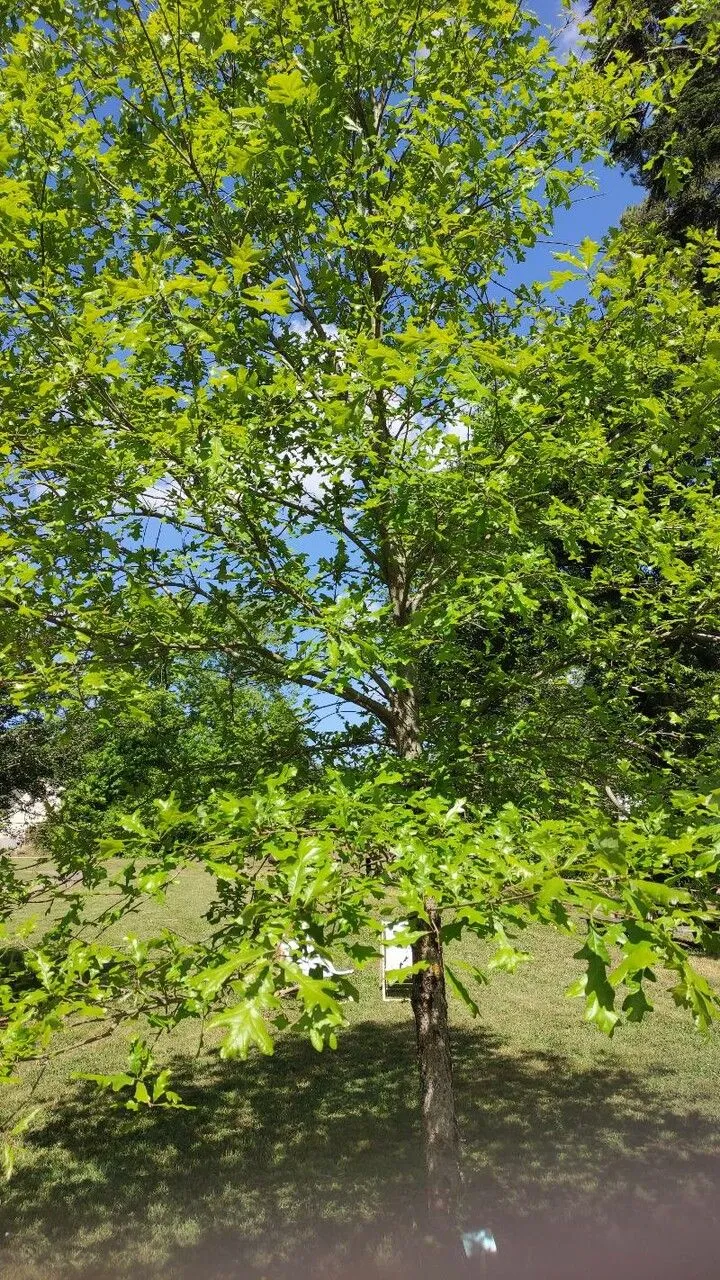
Author: Née
Bibliography: Anales Ci. Nat. 3: 277 (1801)
Year: 1801
Status: accepted
Rank: species
Genus: Quercus
Vegetable: False
Observations: California (incl. Channel Is.)
The Valley Oak, known scientifically as Quercus lobata, is a majestic species that is both a symbol and a vital component of the Californian landscape. Described initially by the botanist Née in 1801, this oak is primarily found throughout California, including the Channel Islands.
Belonging to the family Fagaceae, the Valley Oak is renowned for its impressive stature and distinctive foliage. It is widely regarded as one of the largest oak trees in North America, capable of reaching towering heights and sprawling extensively with age. The tree’s branches spread wide, giving it a broad and majestic canopy that offers substantial shade.
The Valley Oak is well-adapted to the diverse climates found in California, ranging from the fertile valleys to the varying conditions of the Channel Islands. Its deep root system allows it to access water from far below the soil surface, which is particularly advantageous during the dry summer months typical of the region.
One of the distinctive features of Quercus lobata is its lobed leaves, which provide the tree with its scientific name. These leaves turn golden in the autumn, adding a splash of color to the Californian landscape before they shed for the winter. The acorns produced by the Valley Oak are a crucial food source for local wildlife and have historically been an important resource for indigenous peoples.
Apart from its ecological significance, the Valley Oak is valued for its aesthetic appeal, making it a popular choice for parks and large landscapes. Its resilience and adaptability also mean that it can survive in various soil types and environmental conditions, further contributing to its widespread distribution within California.
In summary, the Valley Oak (Quercus lobata) stands as a vital and iconic presence in California’s ecosystems and cultural heritage. Its grandeur and adaptability make it not only a botanical marvel but also an essential part of the natural scenery across the state.
Eng: california white oak, roble, valley oak
En: Valley oak, California white oak, Roble
Zh: 山谷橡木
Fi: Laaksotammi
Fr: Quercus lobata
De: Kalifornische Weiß-Eiche
Is: Dalaeik
Zh-tw: 山谷橡木
Uk: Лопатевий дуб
© copyright of the Board of Trustees of the Royal Botanic Gardens, Kew.
© copyright of the Board of Trustees of the Royal Botanic Gardens, Kew.
© copyright of the Board of Trustees of the Royal Botanic Gardens, Kew.
Taken May 28, 2022 by Dieter Albrecht (cc-by-sa)
Taken Dec 28, 2021 by Saul Thomas (cc-by-sa)
Taken May 17, 2021 by Matt Zehner (cc-by-sa)
Taken Oct 25, 2022 by Daniel Patón (cc-by-sa)
Taken Jun 22, 2021 by Angela Zhou (cc-by-sa)
Taken Nov 11, 2020 by Maarten Vanhove (cc-by-sa)
Taken May 28, 2022 by Dieter Albrecht (cc-by-sa)
Taken Dec 28, 2021 by Saul Thomas (cc-by-sa)
Taken May 28, 2022 by Dieter Albrecht (cc-by-sa)
Growth form>: Single Crown
Growth habit>: Tree
Growth rate>: Rapid
Ph maximum: 7.5
Ph minimum: 4.5
Family: Myrtaceae Author: (F.Muell.) K.D.Hill & L.A.S.Johnson Bibliography: Telopea 6: 402 (1995) Year: 1995 Status:…
Family: Rubiaceae Author: Pierre ex A.Froehner Bibliography: Notizbl. Bot. Gart. Berlin-Dahlem 1: 237 (1897) Year:…
Family: Sapindaceae Author: Koidz. Bibliography: J. Coll. Sci. Imp. Univ. Tokyo 32(1): 38 (1911) Year:…
Family: Asteraceae Author: A.Gray Bibliography: Pacif. Railr. Rep.: 107 (1857) Year: 1857 Status: accepted Rank:…
Family: Fabaceae Author: Medik. Bibliography: Vorles. Churpfälz. Phys.-Ökon. Ges. 2: 398 (1787) Year: 1787 Status:…
Family: Aspleniaceae Author: (Cav.) Alston Bibliography: Bull. Misc. Inform. Kew 1932: 309 (1932) Year: 1932…